Saxony, east Germany an area of wealth, musicians and a vast array of architecture……… After soaking in the feel of Berlin it was time to move on and a long drive in sued for a little bridge in the middle of nowhere, country driving narrow streets fewer cars and taking things at pace where most people would say bloody Sunday drivers! I didn’t care it was decided we needed to slow down or this driving would become a chore. We had got in contact with previous owner about driving in LPG as we had forgotten the directions she gave us back in April last year! Tank full cost a mere €15 and it was time to test how much money this would save us. So onwards at snail pace to a place called Kromlau, a tiny little village that consisted of a pub and that was it. This bridge is called Rakotzbrűcke and was built-in the 19th century, it is situated in a small woodlands forest. Whether this was built for practicality or just sheer enjoyment this bridge stood out to me on a website called Bored Panda. Its nick name is Devil’s bridge as the photo will show was quite a cool site. It was nice to get away from the bustling city life and take in some fresh air. From here we moved on to Leipzig
Leipzig a bustling little city that is renowned for its musicians. After finding a park for the little green machine we headed into the city. Walking on old cobbled streets the architecture would get older the more we walked. Into the centre, and approaching the central part of the markt we would casually take to some narrow streets to just wander and take in the scenery. Here we stumbled onto an old church named The St Thomas church which was built around 1160’s which had undergone many renovations and extensions since this period. This church had a different feel to it than all the other churches we had visited, this one had an amazing amphitheatre and so it should as this was built for aspiring musicians. Johann Sebastian Bach is from this area and made his name in this town, he’s is renowned for classical music and he lead the choir in this church from 1723 to 1750. He remains a phenomenon in the classical music world. From here we headed onto a stellplatz to set up camp, this would be our first night not using electricity and relying on gas lantern for light. It proved that freedom camping will be easy as first imagine.
Rise and shine and we are off to find an old security camp for western allied officers, this is called the Colditz castle. Here remains a story of some allied soldiers building a glider in the attic of the castle to escape the war camp. Once tickets are paid for it was quite astonishing to learn how well the Nazis adhered to the Geneva convention 1929 of respecting enemy soldiers, which meant to be treated humanely and their dignity respected. The privileges entitled them to posses personal items and to practise their religion, scholarly interest and sporting activities were supported. They were also allowed to send a limited number of postcards and letters which of course were censored. This castle looked incredibly well suited for a prison camp as with such high walls surrounding it; it was also built upon a hill. The Germans had this well set up. Well that’s what you think? There were so many attempts to escape this building it defies belief how many actually made it out. All ranging from dressing as a lady with a wig, to building tunnels and escaping through cavities in the wall as well as making false rooms to engineer equipment that would otherwise be contraband. It did make you wonder these men had time on their hands and were indeed crafty buggers! The stories of so many escapes to failed escapes the germans would recreate the escape in photos out of amusement. It really was an amusing education to what they got up to. Many tools they made and false ID with the help of the M19 concealing in packages that passed security checks. Back to the glider story, this was made in an attic and took 10 months to complete this was made out of bed slats, bed draws and cloth. This glider never got used as the Americans liberated Colditz. A prototype was made in UK recently and proved to be able to fly. Crafty buggers to say the least! This was a very worthwhile trip. We were able to walk around the prison camp area where they slept, to the chapel they used, to the cellars in which they secretly built tunnels of planned escapes. The court-yard was also a regular spot for some sports and sun bathing. They were even allowed to go outside of Colditz supervised playing a form of rugby under guard by German shepherds and soldiers as the sport was too restrictive in the court-yard.
Our time was up and next destination was Dresden. Just outside Dresden and we were camped for a night at this campervan dealer shop and camping shop that had a Stellplatz at the back. It was decided we deserved a beer and set wandering what we thought was the closest pub… Turns out Monday evening is not an evening to drink beer! No wonder every day feels like a weekend for us. So we decided to walk around and see if there was another pub or shop. So been walking a fair bit now and we must have been walking for a good hour, certainly worth the walk when you only have to pay €2.29 for 3 large black bottled beers! What a bargin! it seems the price we pay in New Zealand is just bloody ridiculous.
Oh then another half an hour walk back to campsite it sure was well worth it! Oh to top that night off we tried white sausages for the first time, these are delicious and certainly buying more in the near future. On our way early hour of the morning we look to park up and start checking out the old part of Dresden. Now previous towns we would walk around and the sence is you get old buildings chucked in with new ones. Well once we started at Dresden on the south side of the river Elbe, one after the other the old buildings kept coming and it really looked like you were back in the 17th century. A lot of Dresden was also heavily bombarded in the carpet bombings of WW2, a lot of the significant buildings that stand today were rebuilt with the fallen materials. It’s quite fortunate they kept this city looking old because it has an aura of how it was.The Frauenkirche Church has been rebuilt so many times that you can see the scorched stone from burns put back in various places all over the church. This church was built between 1726 to 1743. Another building that caught my attention was the Catholic Hokfkirche church, which was constructed in the middle of the 18th century. The main spire of this building is 83.5 metre high, this church contains the heart of Augustus the Strong is buried in the church’s crypt. One walkway from this church would take you through an archway co-joined between two buildings, little things like this really keep to its old heritage. I could rattle on about all the buildings we saw, so will leave it to the pictures on display below. This town certainly had charm about itself and caught my attention. Dresden did and still has the pull that often got the tag of Florence on the Elbe.
Ready for our next destination was a place called Rathen, just outside this village we encountered some what awe-inspiring Elbe Sandstone mountains. As we come to this area we approach it from the back so you don’t visualize how momentous this is until you’re right there. From the other side of the Elbe river it’s clearly seen as an incredible picturesque landscape . As we waded our way through the forest in heavy snow we quickly noticed the Bastei bridge ahead. To even conceive how this bridge was built in the first place was beyond me. But to know that this current bridge was actually updated in the 19th century is amazing. The old bridge was constructed in medieval times and that the area you are looking at is an old fortification. People lived here and were adapted to living here with a well cut deep into stone for filtration of water to drink. One catapult sits proudly facing the bridge for anyone to enter welcomed would see the bridge fold under them. It was amazing to see these people back in the day make this work, as it was clearly seen as a majestic place to live but also easy to defend. The views from this clifftop were stunning to say the least. Walking through here in heavy snow with icy paths really did get the heart beat pumping but soon all forgotten with the view point out to the Czech border. This by far has been my best experience yet in Europe and to think we are only 2 and a half weeks in is a real eye opener on what is to come.
Tonight we begin preparations to cross the border into Czech Republic, another opportunity for more delicious beer. We will head into Prague then onwards to Plzen to come out the other side back into Germany to complete the bottom half of this great country. This concludes my blog of Saxony region.
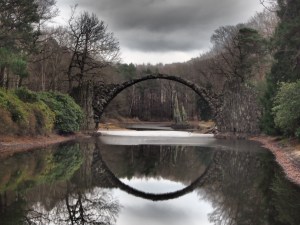


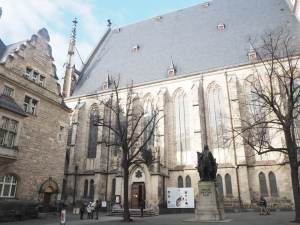





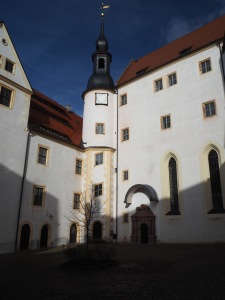

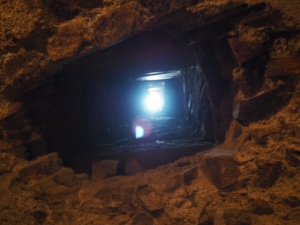


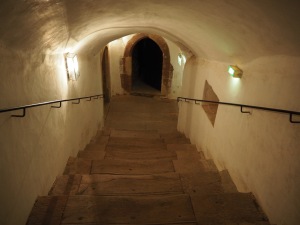




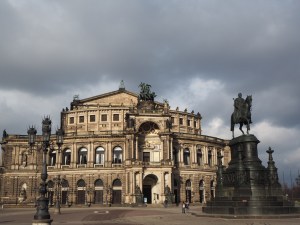


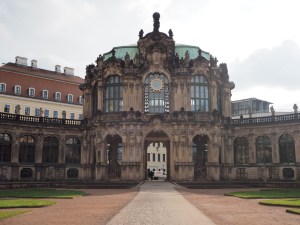
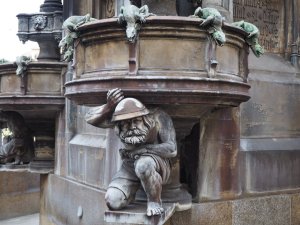
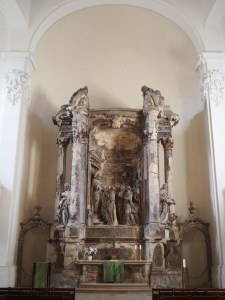



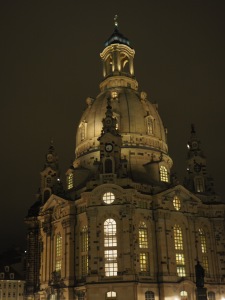






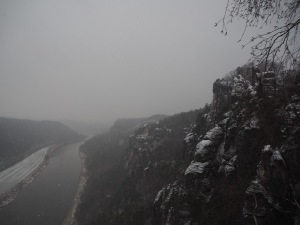

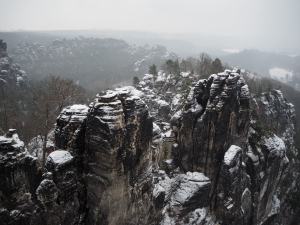
That’s a stunning fucking bridge mate.
LikeLiked by 1 person
Sure was mate, slippery as hell too. Shits were had!
LikeLike